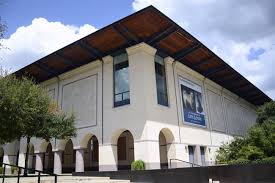Jun 19 2016 - Sep 25 2016
Austin, TX
Goya: Mad Reason is an exhibition of nearly 150 prints and paintings by renowned Spanish court painter Francisco de Goya. The series of prints comprising Goya: Mad Reason—borrowed from Yale University Art Gallery’s distinguished Arthur Ross Collection—illustrate the artist’s mastery of forms and concepts as he grappled with the changing political and intellectual landscape of his native Spain in the early nineteenth century. Yale chose the Blanton as a partner for its Ross Collection sharing initiative, and the Blanton in turn selected Yale’s superb and affecting Goya prints as a foundation for this exhibition. Select paintings on loan from the Kimbell Art Museum, the Meadows Museum, and the Museum of Fine Arts Houston will further punctuate Goya: Mad Reason thematically and visually, offering new and insightful ways of understanding the artist’s prints.
[...] Among Spain’s most celebrated artists, Francisco de Goya (1746–1828) is sometimes considered the first truly modern artist. Edouard Manet, Pablo Picasso, Salvador Dalí and many other artists from the nineteenth and twentieth centuries looked to Goya’s art for inspiration, and he continues to serve as a touchstone for contemporary artists like Yinka Shonibare and Enrique Chagoya. Goya is known for his penetrating characterization of the human condition, his insightful criticisms of ignorance and oppression, and his unflinching look at the inhumanity of war.
Goya: Mad Reason highlights the artist’s treatment of war, bullfighting as a national pastime, and the instability of reason itself. His work makes visible the great transformations and unrest of Europe during his lifetime. Goya’s images manifest his hope for social progress as well as his disappointments. Against the traditions and vested interests of the populace, Church, and nobility, Spain’s liberal elites—many in Goya’s circles—sought and achieved economic and educational reforms from the monarchy throughout the 1700s. Fears of the French Revolution spreading instability, and Napoleon Bonaparte’s subsequent 1808 invasion of Spain, halted much of that progress. After the war, the reign of Ferdinand VII led to regression and repression. In 1824, Goya left Spain for a self-imposed exile in Bordeaux, France.
Goya’s art belongs to this history, yet it remains relevant for today’s viewers due, in part, to the themes explored in his works and his unique visual expression. The works exhibited in Goya: Mad Reason also reveal a shifting tension between objectivity, or reason, and irrational emotion. The partitioning of knowledge that flourished in Goya’s lifetime, as modern scientific thought grew in opposition to the humanities, underlies this development and persists as a basis of our own worldviews today. Goya: Mad Reason explores these issues across the artist’s prints and paintings, examining their historical and social power as well as the artist’s mastery across the media of painting and printmaking.
Credit: Exhibition overview from museum website.
Whether you go or not, Meant to Be Shared: The Arthur Ross Collection of European Prints, offers the first comprehensive look at the Arthur Ross Collection—more than 1,200 17th- to 20th-century Italian, French, and Spanish prints—and is published to mark the inaugural exhibition of the collection in its new home at the Yale University Art Gallery. Highlights include superb etchings by Canaletto and Tiepolo; the four volumes of Piranesi’s Antiquities of Rome, as well as his famous Vedute (Views) and Carceri (Prisons); Goya’s Tauromaquia in its first edition of 1816; an extremely rare etching by Edgar Degas; and numerous other 19th-century French prints, by Eugène Delacroix, Honoré Daumier, Édouard Manet, Paul Gauguin, Paul Cézanne, and others. The accompanying essays discuss the life of Arthur Ross, a significant philanthropist who funded several arts institutions; the formation of the collection and the art-historical significance of the works; and several thematic approaches to studying the collection, reinforcing its legacy as an important teaching resource.
Exhibition Venues & Dates
Jun 19 2016 - Sep 25 2016
Austin, TX

